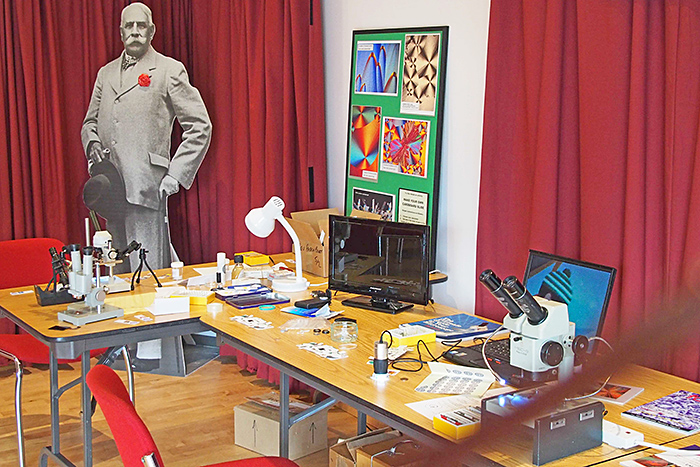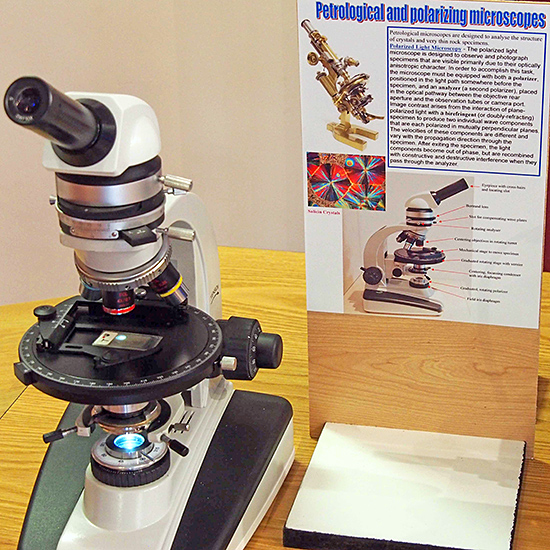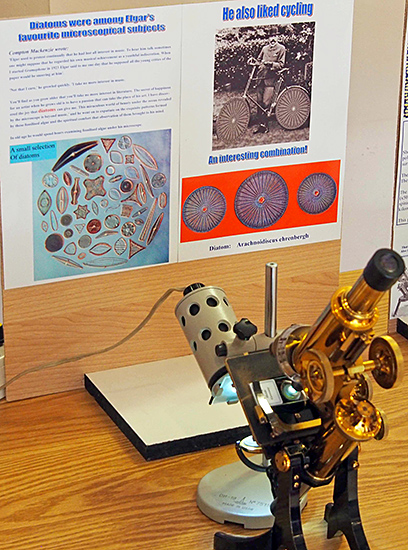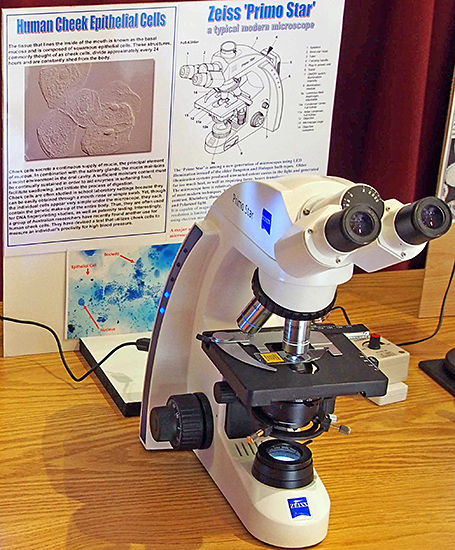Elgar Birthplace Museum
Micro-Science Activity Weekend
Saturday 21st & Sunday 22nd March 2015
Quekett Microscopical Club members Mike Gibson and Ray Sloss organised a Micro-Science Activity Weekend with an impressive and imaginative range of displays of microscopes and specimens at the Elgar Birthplace Museum near Worcester as part of British Science Week 2015 and as part of the Club’s 150th Anniversary events.
Sir Edward Elgar is of course best known as a composer, but after moving to Hampstead in 1912 he developed a lively interest in microscopy and was interested in all things microscopic, including diatoms and even counting the heart-rate of Daphnia. Elgar owned several microscopes, one of which can be seen in the birthplace cottage, and he had a laboratory where he examined prepared slides and specimens that he collected from Hampstead Heath and Highgate Ponds. Mike Gibson wrote an article on him for Balsam Post no. 76.




In addition to the static displays, there were practical and hands-on activities with various microscopes including a Lomo stereomicroscope, a Swift monocular student microscope and a couple of Natural History Museum microscopes, together with a USB microscope connected to a laptop, all available for the children and adults to try out. There were practical slide-making opportunities for the children to make their own cardboard slides of foraminifera in sand from Dog’s Bay along with other cardboard slides of newsprint, postage stamps, bits of feather, etc. In addition, making leaf impressions using nail varnish and clear Sellotape proved very enjoyable and interesting for both children and adults.
 Replica of van Leeuwenhoek’s simple microscope, made by Ray Sloss
Replica of van Leeuwenhoek’s simple microscope, made by Ray Sloss
 Wenham binocular microscope, used to view polycystine radiolarians
Wenham binocular microscope, used to view polycystine radiolarians
 Wild stereomicroscope, used to observe Paramecium
Wild stereomicroscope, used to observe Paramecium
 Stereomicroscope, used to view red, green and blue pixels in an LCD screen
Stereomicroscope, used to view red, green and blue pixels in an LCD screen
 Olympus CK2 trinocular inverted microscope, used to observe water fleas
Olympus CK2 trinocular inverted microscope, used to observe water fleas
 Polarising microscope, used to observe crystals and thin rock sections
Polarising microscope, used to observe crystals and thin rock sections
 Brass monocular microscope, used to observe diatoms
Brass monocular microscope, used to observe diatoms
 Brass monocular microscope, used to view reflective bumps on a CD of Elgar’s music
Brass monocular microscope, used to view reflective bumps on a CD of Elgar’s music
 Zeiss Primo Star binocular microscope, used to look at human cheek epithelial cells
Zeiss Primo Star binocular microscope, used to look at human cheek epithelial cells
Our thanks to Ray Sloss and Mike Gibbs for all of the time, effort and inspiration that went into preparing a first-rate event.
 Ray Sloss
Ray Sloss
 Mike Gibson
Mike Gibson
As part of British Science Week, the Museum sponsored a competition to win prizes of Natural History Museum pocket microscopes. All young visitors to the Museum were invited to complete a feedback form to say what they thought about the exhibition and answer the question: “What is the maker’s name on Elgar’s microscope on display in the birthplace cottage?”. At the end of each day, all the completed forms were placed in a box and the first two winning entries to be drawn out of the box won the pocket microscopes.
Mike and Ray may very well be returning to the Museum to photograph the Elgar slide collection, as Mike has tentatively agreed to put together an illustrated guide to “Elgar & his Microscopes” for possible publication.
Photos by Ray Sloss

